| - | - | - |
| tai | 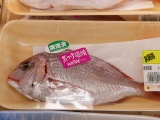 |
sea bream Tai is a king of fish and has some special meaning in Japan. |
| taionkei |  |
Clinical thermometer |
| tai no sashimi | 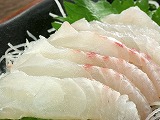 |
Sea bream sashimi |
| Taishu Engeki | - | |
| takai takai | One of the way to comfort a baby. Hold up a baby high |
|
| take | 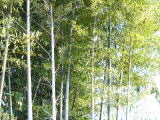 |
Bamboo Take is a symbol of power or growing. |
| takenoko | Bamboo shoot | |
| takeyabu | 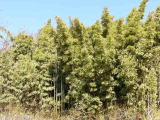 |
bamboo bush |
| takeuma | A pair of stilts or a play with it. | |
| taki |  |
waterfall |
| takibi | fire, bonfire, open-air fire | |
| tamanegi | 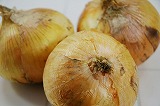 |
onion |
| tamanokoshi | - | palanquin set with jewels *"tamanokoshi ni noru" means to marry into a family of rank |
| tampopo | 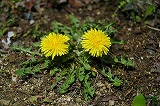 |
dandelion |
| tanuki | 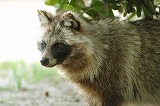 |
raccoon dog |
| tanuki-bayashi (Tanuki no haratsuzumi) |
raccoon dogs drumming on their stomachs |
|
| tanuki no okimono | 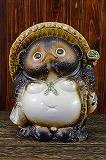 |
Ceramic ornament of raccoon dog. This is one of the most popular good luck charms. They usualy have a sake bottle and a notebook, and wear a straw hat called kasa. |
| tanuki-udon | Wheat noodles in hot soy soup with bits of deep-fried tempura batter: in
East Japan, or noodles in ankake soup with small cut age(fried tofu) and ginger: in West Japan. [ankake: an is dish sauce made by mixing kuzuko or potato starch with water or stock and soy sauce etc. and heating until it becomes thick.. kake: kake means kakeru (put..on)] Tanuki udon in Nagoya is the Eastern type. Tanuki comes from "taneruki (tane-nuki)"(lit: without ingredient). So, tanuki doesn't mean a racoon dog. |
|
| tara no me タラの芽 |
One of popular wild plants in spring. A lttle bit bitter but tasty. Tempura of taranome is very good. |
|
| tarako 鱈子 |
- | cod row |
| tarento (talent) タレント |
- | T.V.personality |
| tearai 手洗い |
Washing hands | |
| tebasaki 手羽先 |
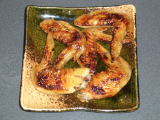 |
Tebasaki is one of the Nagoya special cuisin. Fried chicken wing with sweet soysauce-based sauce. |
| tejaku 手酌 |
Help oneself to sake | |
| Tejikara no Himatsuri 手力の火祭り |
Tejikara Fire Festival | |
| Tekisuto (text) テキスト |
Textbook | |
| temari-zushi 手鞠寿司 |
 |
A kind of sushi, shaped like a ball (using wrapping film to shape ball at home) |
| temizuya 手水屋 |
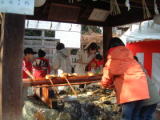 |
A bower with roof and four pillars in shrines or temples. A stone basin for cleanse visitors' hands and mouths is set there. We drop temizuya and cleanse with water before visiting the main shrines. |
| tempura udon 天ぷらうどん |
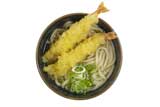 |
Japanese udon noodle with tempura |
| tengu |  |
One of an imaged lives. |
| tenteki |  |
drip, drip infusion |
| Tenteko Matsuri |  |
Tenteko Festival |
| tentoumushi | 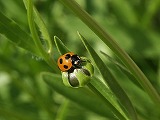 |
ladybug |
| tetsugoushi |  |
iron lattice |
| tezutsu hanabi |  |
Holding large cylinder type firework |
| tisshu paper | 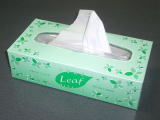 |
tissue |
| tobi/tombi 鳶 |  |
kite(bird) |
| tobi/tobishoku鳶職 | - | scaffolding or construction worker |
| tobibako | vaulting horse | |
| tobiishi | stepping stone tobiishi-renkyu (a week studded with holidays) |
|
| todai | 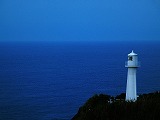 |
lighthouse |
| toge | 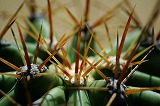 |
thorn, prickle, |
| toire | Lavatory Express in another way....... (O)tearai(御)手洗い, (O)Benjo(御)便所, Setchin雪隠, Gofujo御不浄, Kawaya厠, Keshoshitsu化粧室, Habakari憚り,Koka後架, koushi行厠, kouyasan高野山, W.C. etc. |
|
| tokai | city area, town, urban area | |
| Toka-shinji |  |
One of Shinto rituals |
| tokei | 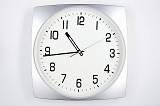 |
clock, watch |
| Tokyo |  |
The capital of Japan |
| tombo |  |
dragonfly |
| tomorokoshi | 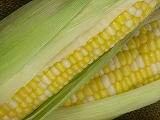 |
sweet corn |
| torii |  |
gateway at the entrance to a Shinto shrine |
| tori no karaage | deep-fried chicken | |
| toro | 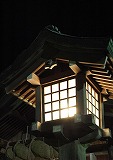 |
garden lantern |
| toro-nagashi |  |
Lantern floating festival manto-nagashi or shoro-nagashi This is a custome to send back our ancestors' spirit, which had returned during the bon period, to the Other Side. Float lanterns on the surface of a river. |
| toryanse | ||
| toseinin | Toseini is a jobless gambler or yakuza in the Edo period. | |
| Tsubaki | 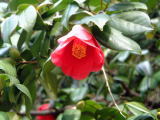 |
camellia |
| tsuki | 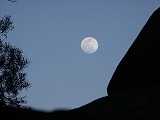 |
the moon |
| tsukimi |  |
Moon viewing It is said that the best day for the moon viewing is August 15th of the lunar calendar. |
| tsukimi-dango |  |
Japanese sweets for the Moon Viewing Day. Usually tsukimi-dango is like a white ping-pong ball but Nagoyan special type is shaped like satoimo ( taro ) and has three colors |
| tsukimi-soba | 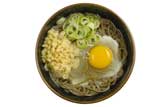 |
Buckwheat noodles with a sunny-side-up egg. and nori (toasted laver) Tsukimi means the moon viewing. A yolk looks like the moon, an egg white for clowds and nori for night sky. (Sometimes green vegetables show pain trees and shiitake mushroom for woods) |
| tsukimi-udon | 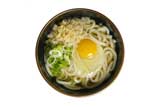 |
Noodles with a sunny-side-up egg. and nori (toasted laver) Tsukimi means the moon viewing. A yolk looks like the moon, an egg white for clowds and nori for night sky. (Sometimes green vegetables show pain trees and shiitake mushroom for woods) |
| Tsukubane | 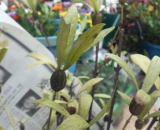 |
Tsukubane |
| tsukudani |  |
Preserved food boiled in water, soy sauce, sugar, sake or mirin(sweet sake)
until ingredients get heavy taste (pic./ fish tsukudani) |
| tsukushi | 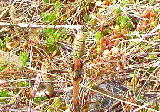 |
Equisetum arvense/ horsetail eatable |
| tsume | 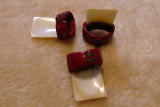 |
Nail shaped pick for koto/Japanese harp |
| tsunodarai 角盥 |
 |
tsuno 角 (horn), tarai 盥 (basin)=> darai Most of the tsunodarai are Japanese lacquer wear. There are four handles like a horn. Used for washing hands or gargling. |
| Tsushima Aki-Matsuri |  |
Autumn Festival of Tsushima Shrine |
| tsuyu | 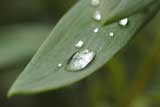 |
dew, dewdrop |
| tsuyukusa | 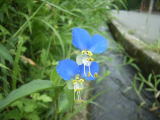 |
day flower |
| tsuzumi | A Japanese traditional handy drum played with the tips of fingers. It is often used as one of the orchestra instruments in Noh, Kyogen, Nagauta, etc. |